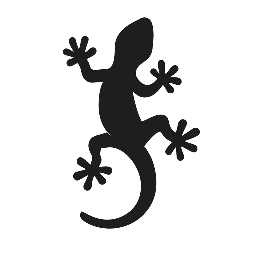You’re in the produce aisle, planning your bearded dragon’s salads for the week. You grab the usual staples—collard greens, maybe some butternut squash—and then you see it: a vibrant, leafy bunch of kale. It’s hailed as a “superfood” for humans, packed with vitamins and minerals. It seems like a perfect, healthy choice for your scaly friend.
But you hesitate. You remember hearing whispers in online reptile forums about certain greens being “bad,” but you can’t recall which ones or why.
So, what’s the deal with kale? Can this human health-food hero be a part of your bearded dragon’s diet? The answer is yes, but with a very important catch. And it all comes down to a sneaky little compound called an oxalate.
The “Villain” of the Story: Understanding Oxalates
Before we can judge kale, we need to understand its baggage. Oxalic acid, or oxalate, is a naturally occurring compound found in many plants. In small amounts, it’s generally harmless. However, in larger quantities, it can cause serious problems for reptiles.
Here’s how it works: When your bearded dragon eats a food containing oxalates, the compound travels through their digestive tract and binds with minerals, most importantly, calcium.
This binding process creates calcium oxalate, an insoluble compound. This means the calcium becomes “locked up,” making it impossible for your dragon’s body to absorb and use it. For a species that is already susceptible to Metabolic Bone Disease (MBD)—a devastating condition caused by calcium deficiency—anything that interferes with calcium absorption is a serious concern.
So, Can My Bearded Dragon Eat Kale?
Here is the direct and nuanced answer: Yes, but only as an occasional treat, not as a daily staple.
Kale is not toxic, but it contains a moderate level of oxalates. It’s not nearly as high as notorious high-oxalate greens like spinach or Swiss chard, but it’s significantly higher than the ideal staple greens.
Think of it like dessert for your dragon. A small piece of cake once in a while is a perfectly fine treat, but you wouldn’t build your entire diet around it. Similarly, offering a few pieces of kale every few weeks can add variety and a nutrient boost to their diet without posing a significant risk. But if you make it the foundation of their daily salad, the cumulative effect of those oxalates could begin to interfere with their calcium levels over time.
The Good, The Bad, and The Leafy: A Quick Comparison
To put kale into perspective, let’s categorize some common greens based on their oxalate levels:
✅ Staple Greens (Low Oxalates – Feed Daily!)
- Collard Greens
- Mustard Greens
- Turnip Greens
- Dandelion Greens
- Butternut Squash
🟡 Occasional Greens (Moderate Oxalates – Feed Sparingly)
- Kale
- Bok Choy
- Carrot Tops
❌ High-Oxalate Greens (Avoid or Feed VERY Rarely)
- Spinach
- Swiss Chard
- Beet Greens
How to Serve Kale Safely
If you decide to offer kale as a treat, here are a few best practices:
- Limit Frequency: A good rule of thumb is to offer it no more than once every few weeks.
- Mix It In: Don’t serve a bowl of pure kale. Instead, chop up a small amount and mix it into a larger salad made from staple greens. This dilutes the overall oxalate content of the meal.
- Prepare it Properly: As with all produce, wash it thoroughly and chop it into small, manageable, bite-sized pieces.
The Verdict
Kale is a nutrient-dense green that can be a healthy part of a varied and balanced diet for your bearded dragon. However, due to its moderate oxalate content, its role should be that of an occasional guest star, not the main character.
For the daily salad—the most important part of an adult dragon’s diet—stick to the tried-and-true, low-oxalate staples. This will ensure your bearded dragon gets all the usable calcium it needs to maintain strong, healthy bones for a long and happy life.

Leave a Reply